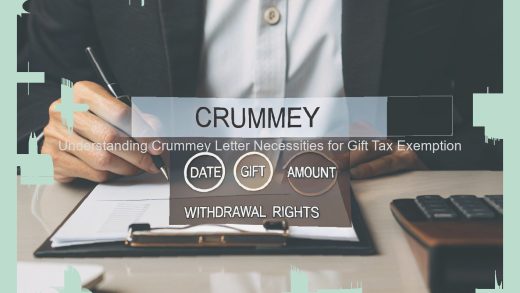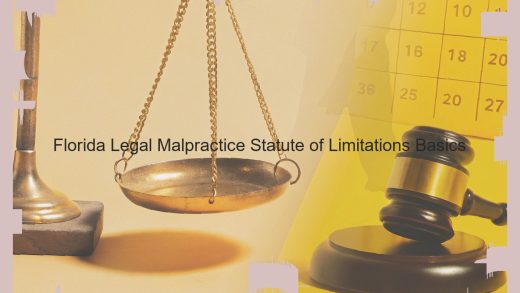What is a Demand Letter?
A demand letter is essentially "a fact-specific letter from a party (usually a business) to another party informing the latter that it has breached a contract, and demanding adequate contractual remedy for the breach at hand." While these letters are most often sent to contract partners and business associates, they do not need to take the form of such a request: For example, in some situations they are made because a counter-party has stopped making payments , while others include more general details about what breach has occurred. Although these letters are not generally legally required, they are considered best practice – especially in a breach of contract situation. Sometimes, as parties attempt to avoid escalation, they can work out a solution without resorting to litigation. Even in cases where litigation is eventually necessary, starting with a demand letter can help clarify specific issues of disagreement, which can lead to a more efficient resolution if the case does move to court.
Elements of a Demand Letter
The first thing you must include in a demand letter for breach of contract is the terms of the contract as you see them. You should explain your side, then explain how the other party has violated the terms of the contract. In some cases, the other party may simply be late in delivering a service. If this is the case, you demand for them to complete the service. If the party has violated the terms of the contract, explain the violation, and if you can afford it, provide proof (ex. a copy of the signed agreement). If the violation was not as great, you should explain to them what terms they violated and demand for them to fix it.
Then, you will want to recalculate the damages. If you signed a settlement agreement, even if your demand is smaller than the settlement agreement, it’s possible that the judge will rule in your favor. When you add up the costs of damages, try to keep them to a minimum. There is no need to over-inflate the cost of damages. Remember that what was lost in breach of contract is not likely something that could be described as being "priceless" or you would not need a court hearing to get what you want.
Finally, what do you want as a result of the legal action? Do you want a refund of your money? Do you want the work that you paid for done? Perhaps you want to be compensated for damages incurred because of the breach of contract. Whatever you want, explain it to them in detail. Afterwards, you can let the court know if you tried to settle the matter without seeking damages.
Legal Issues to Consider
While there are no laws that exist that expressly require the use of a demand letter before commencing litigation, there are a number of legal issues that must be taken into consideration when drafting and sending a demand letter. In some cases, if the demand letter is phrased in such a way and it is sent to a represented party through their attorney, this may result in an ethical violation for the attorney representing the adverse party. This article by Judge Robreno cites to an article written by Judge Richard Posner (Posner, The Law and Economics of Post-Contractual Obligations, 60 U. CHI. L. REV. 69 (1993)), which breaks up the different expectations arising throughout the life of the parties contractual relationship: A postcontractual obligation is one that goes beyond the parties’ express contractual obligations. Supporative obligations (also sometimes called "supervening obligations") supplement existing contractual obligations; if they are violated, the breaching party is liable for breach of contract. Qualifying obligations qualify existing contractual obligations. If they are violated, the breaching party is liable in tort. The breach must be negligent. Any breach, careless or otherwise, of a qualifying obligation is a tort. See Landon-Franklin v. Honig, [1990-2 Trade Cas. (CCH) P68,969 at 82,777 (D. Utah 1990)]. In contrast, in the absence of an independent reason, tort damages are not an appropriate measure of damages for the breach of a non-qualifying obligation. By sending a demand letter that places specific duties on a party that go beyond the parties’ contractual obligation, or purport to qualify an existing contractual obligation, the sending party may be setting itself up to be liable for a breach of a non-qualifying obligation. It is also possible that a court would hold that a settlement demand sent to a party that is not represented by counsel in violation of a statute or rule of procedure is not governed by the statutory privilege that would otherwise protect the settlement communication from discovery. See e.g., Fed. R. Evid. 408. A collecting of courts have held that a defendant who makes no effort to bring the claim to the attention of the plaintiff’s attorney before a collection letter is sent may be held liable for actual damages plus statutory damages. See e.g., 15 U.S.C.A. § 1692k(a)(2). Other courts have stated that a party’s attorney has the authority to act on his client’s behalf, and as such a collection attorney maintains its rights to protection under the law. See Green v. Frederick, 221 F. Supp. 2d 1341 (M.D. Ga. 2002). Sending a demand letter that seeks to settle a lawsuit that contemplates litigation 10 or 15 years in the future, as opposed to a current lawsuit, may be prohibited by the FDCPA when a plaintiff demands that a statute of repose expire as part of a resolution of a lawsuit. The court in Hypertouch, Inc. v. Affinity Card Solutions, LLC, 2013 U.S. Dist. LEXIS 83890 (N.D. Ill. June 17, 2013), denied a creditor’s attempt to recover payments made in the preceding 90 days, when the alleged claims were barred by the statute of limitations, thereby placing that money outside of the reach of the creditor under the terms of the settlement. While not all institutions are viewed as desirable clients by the private bar, sending a demand letter to an attorney representing an institution’s adverse party may not be well received. Attorneys for adverse parties may perceive that an attorney representing an institution is engaging in bad faith litigation practice if they seek to settle a case by making demands of the adverse party’s attorney. In some cases, the risk of exposing an attorney to a Rule 11 sanctions motion may be enough to dissuade an adverse party from responding to a demand letter.
Sample Demand Letter Template
FIRM NAME
ADDRESS
CITY, STATE AND ZIP CODE
PHONE NUMBER
DATE
SEND VIA CERTIFIED MAIL, RETURN RECEIPT REQUESTED
NAME OF VICTIM(S)
ADDRESS OF VICTIM(S)
CITY, STATE AND ZIP CODE OF VICTIM(S)
RE: DEMAND FOR BREACH OF CONTRACT
Dear
:
This letter is a formal demand for the breach of contract that you caused to come about when you,
, failed to perform as bargained on
.
On
, we entered into a contract, by which you agreed and promised to
On the same date, I/we paid you the total amount of
in exchange for your services. Unfortunately, despite my complete and total performance in accordance with our agreement, you have failed to mine by
Having been completely willing to abide by our agreement and having fully performed my part of the bargain, I now expect you to do the same and perform your obligations under the agreement.
You are hereby notified that your failure or refusal to immediately remedy this situation will constitute a full breach of our agreement and/or contract and may cause me/us irreparable damages. I am therefore making a specific demand for the following:
If you fail to remedy this situation within _______ days of your receipt of this letter of demand, I/We will interpret your failure to remedy/or refusal to remedy this situation or the above listed issues as a breach of the agreement and contract.
Please note that this letter is written without prejudice to my/our rights. Please govern yourself accordingly.
Best Practices for Drafting a Demand Letter
Keep a professional tone. While it may be instinctual to go on the offensive and include snippets of personal attacks, doing so is counterproductive, as it will encourage the other party to respond in kind. Keeping a level head can go a long way toward producing an amicable result. Letters filled with exclamation points, often in red or different colors, should be avoided.
Include numbered paragraphs. Numbering paragraphs in the body of the letter will help you as well as the recipient of the letter to follow along. There is nothing scarier (and more annoying) to a recipient of a letter than having to stop reading to search for a prior paragraph to understand the paragraph they are reading. Some demand letters I have received from opposing counsel have pages upon pages of unnumbered paragraphs, making it nearly impossible to follow, no matter how diligent or patient the reader.
Make sure the demand letter is easy to read. Aim to keep sentences short and to the point, so the reader does not lose focus. Reading long, intricately composed sentences is tiresome, and can lead to the reader missing important details. Similarly, only include one inquiry or direction per paragraph. Again, structuring the letter this way will help you and the reader to avoid misunderstandings.
Draw up a skeleton. Oftentimes, it is useful to quickly create an outline of the main points you wish to address in the letter before writing it . This way, you will know beforehand the order in which each point should go.
Include supporting documentation. Including the most significant pieces of evidence of the breach will give the reader a better idea of the indiscretion. This will also help to strengthen your arguments and point to inconsistencies in the other party’s position.
Include a request for a response. The end of the letter will usually request a response by a certain date. Not only is this a way to gauge the other party’s dedication to the dispute, but it can also set the table for possible settlement.
Be detailed. Withhold no detail in the demand letter, other than identifying information, of course. The more evidence you have in your possession when initially drafting the demand letter, the better. For example, if the breach was of a contract, include a copy of the contract, with the relevant terms highlighted. This provides a reference point for the reader and helps to keep the demand letter succinct.
Seek confirmation. A good attorney will usually call prior to sending out the initial draft of a document, be it a motion, a brief, or a demand letter. If this phone call is made, it allows the recipient, in the case of a motion or brief, sufficient time to meet your requirements without having to read through a rough draft.
Be respectful. A thoughtfulness toward the opposing attorney can go a long way toward ensuring a productive relationship throughout the litigation.
Avoiding Common Pitfalls
Although there are no specific legal requirements for a demand letter in Virginia, I typically recommend that the letter contain specific information to maximize the likelihood of a constructive response from the other party. Offering more information helps to advance your own case, while addressing the concerns of the other party before litigation arises. Here are some common mistakes to avoid when crafting a demand letter:
Not being clear about your demands: If there are multiple issues you need to address, list them in the order of your priority. Sometimes the most important issues arise on the back end of a contract, and you want to know what is most important to the other party. Demanding more than you think you can recover in court: See this useful resource from William & Mary Law School to help you determine the value of your claim. Showing up to court with inflated expectations won’t serve you well in convincing the judge that you deserve a judgment in your favor against the other party. Relying on boilerplate language instead of personalizing your situation: This also allows you the opportunity to take the high road if it gives you the chance to show how understanding you are (which also seems appealing when you get into court against an inflexible opponent).
Final Thoughts and Action Items
Once a proper demand letter is sent, your expectation and hope is that the recipient will respond and address the matter immediately. After all, telling someone that they owe you something is certainly something that needs to be done promptly.
However, not every demand letter results in the receiving party addressing the issue immediately. Sometimes the demand goes ignored. This is a reality of dealing with these types of matters and it is certainly frustrating and concerning. However, knowing what your next steps should be will keep you in an excellent position if and when the matter proceeds to court.
So what do you do when you make a demand for breach of contract and do not get a response from the other party? It depends on what the response or lack thereof was regarding. If they claim that the condition precedent has not been met, then it is necessary to provide evidence that the condition precedent was met . If they are denying liability for the breach, then it may be necessary to show proof that there was a breach of a contractual obligation.
Keep in mind that they need to respond to the specific claims you are making. Either way, the request for a response needs to come shortly after they have failed to respond or respond in the way that they should have.
Depending on the type of claim or breach made, you may wish to send a follow-up letter. The follow-up letter should demand a response by a certain date so that you have a record that you are again asking for a response and that you are specifying a time by which they should respond.
If the other party fails to deliver the response that you are looking for, then you will need to escalate matters and file a civil complaint with the local or federal court. Generally speaking, filing a lawsuit for breach of contract is really the only course of action once the demand letter has received no response and has not been met.



